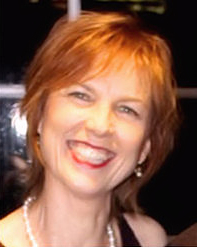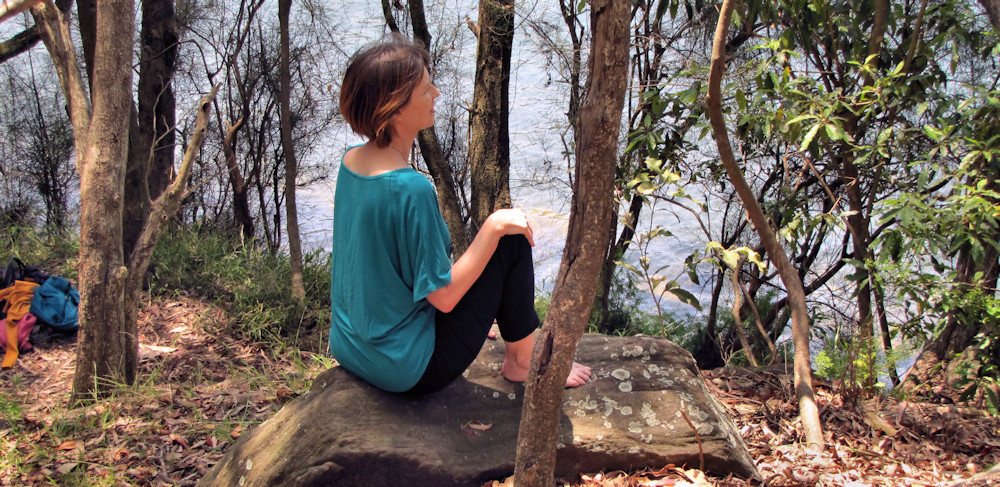
Ms Robyn Price
Psychotherapist, Dance Therapist
Robyn Price Counselling & Psychotherapy
Crows Nest, Sydney NSW 2065
In Person + Telehealth
Philosophy & Vision
I am a Gestalt Psychotherapist and Somatic Movement Psychotherapist/Dance Movement Therapist with 18 years' experience working with groups and individuals. My approach is relational, creative, trauma-informed and adapted to suit the unique needs of each person or group. A deep knowledge of body process and nonverbal communication allows me to work with the whole of a person's experience, rather than focusing on words alone.
Background
I have been working in the healing space for more than 18 years, running groups in the mental health and addictions recovery, aged care and disability sectors. I began working with individuals in 2015 and have run staff development workshops in the corporate sector. Since 2005, I have worked as a tutor, lecturer, supervisor, mentor and workshop facilitator/trainer.
One of my lifelong fascinations is with the communication process, something I explored as an IT marketing communications manager for 20 years and now as a therapist. I am interested in how humans communicate and fascinated by their stories.
My DMT work is informed by my love for music, my classical violin and contemporary dance training.
Services
Quality Provision
I am a Professional Member and Clinical Supervisor for the Dance Movement Therapy Association of Australasia (DTAA), a Registered Member of PACFA (Psychotherapy and Counselling Federation of Australia) and a qualified Clinical Supervisor. I attend regular supervision sessions and a range of Professional Development trainings each year to support both my Gestalt Therapy and Dance Movement Therapy practice, and serve on the Board of the DTAA. I am also an educator, mentor and qualified supervisor.
Areas of Special Interest
Accreditations
- Master of Gestalt Therapy - 2015 - Gestalt Therapy Sydney
- Graduate Diploma of Dance Therapy - 2004 - Wesley Institute
- Graduate Diploma of Supervision - 2021 - Gestalt Therapy Australia
Modalities
Attachment Theory - Creative Arts Therapy - Dance Movement Therapy - Developmental - Dialogical Practice - Experiential - Focusing - Gestalt - Interpersonal - Mindfulness - Person Centred - Process Oriented - Somatic Psychotherapy - Trauma-Informed
Therapy Approach
We will start with 3-4 sessions to see if we can work together. Establishing a focus for the work is the starting point; gathering information about your situation guides that process. Sessions are grounded in the present moment and invite awareness of what emerges in the therapeutic relationship.
Gestalt Therapy is conversational, invites awareness of the whole of your experience (including the body), acknowledges the relevance of your broader life situation, and may use creative experiments to explore.
A Somatic or Dance Movement Therapy approach uses movement as the primary mode of exploration, while talking, dance and other creative processes are used to deepen understanding and practise new ways of being and relating.
Professional Associations
- Psychotherapy and Counselling Federation of Australia - Clinical
Practice Locations
Counselling 102
Hume Street
Crows Nest NSW 2065
Crows Nest - the clinic is 10 mins walk from St Leonards station. Park in council carparks (2 hr free) or on street (free and metered)
Balgowlah - free parking on surrounding streets or in Stockland Balgowlah's carpark (3 hrs free)
Appointments
Balgowlah - Tues, 9am - 3pm
Crows Nest - Wed, am, Thursdays 9am-5pm
All times are subject to availability.
Fees & Insurance
Individuals:
$150 (inc GST) per one-hour session
$130 Full-time students (ID required)
Please enquire about the cost of Group Workshops or Programs
Payment Options
Cash
EFT
Contact Robyn
Please contact me to make an appointment

A conversation with Robyn Price
-
Psychotherapy eventually found me. The seed was planted many years ago as I recovered from a bout of depression in my university days. The catalyst for recovery was a creative dance class run by a woman who would become one of Australia's Dance Therapy pioneers, Hanny Exiner. Through her classes, I discovered the healing power of movement, creativity and connection. I continued to dance, study and teach dance, at the same time as building a career in marketing communications, I began my Dance Movement Therapy (DMT) training in 2002 and ran groups in many different settings. Another personal crisis led me to a Gestalt Therapist and several years of personal therapy to help me understand the effects of my early childhood experiences. This was life changing. The subsequent training in Gestalt Therapy, with its creative, present moment and body-inclusive approach greatly enhanced my DMT work and has only cemented my belief in the value of psychotherapy as a profession.
-
Long before neuroscience gave it credence, I knew that the body and mind were interconnected and that a person could tap into their personal material through either. In my world view, thinking was not superior. It is only recently that the trauma literature supports such a view.
Humanism has also deeply influenced my work, along with the combined philosophies of Gestalt therapy, where relationship, difference and community are central to the health and wellbeing of people and the world they live in. -
I am really passionate about supporting people to view and experience the body as a resource - an integral part of themselves, not a less valuable part. So many people I see are disconnected from their body and believe that someone else has the answer to their problems. When they learn to be present in their body, to track their own responses, when they recognise the signs of distress, when they use that awareness to make different decisions, that is when change can occur. When the mind and body are working together, we have the potential for health and wellbeing.
On the human journey, I am floored by how much people can cope with and how many are drawn intuitively to seek help when they need it. -
Typically, a person books in for either Gestalt Therapy or Somatic Movement Psychotherapy/Dance Movement Therapy and so the request is where we begin. The meeting, check in and close of each session is the same regardless. Establishing a working relationship is essential, whether or not we are about to talk or move about. In a Gestalt Therapy approach, we are not so much concerned with methods as the relationship that is developing between us and what shows up in the room. By tracking and developing awareness of what is present, there is a possibility for change. Creative processes such as drawing, moving, sandtray etc. allow for exploration of the material. With a movement-based approach, the body is the focus. Words are not as important; rather, following a movement, exploring and exaggerating often leads to clarification and insight. Or not. We are always working creatively with something as simple as the breath rhythm through to the creation of a movement sequence reflecting a personal theme. Music can be useful to support an exploration but is not necessary.
-
This is a difficult question as it depends on the individual's readiness to change and also, what is understood as progress. In the short term, a person might be developing skills to reduce anxiety or to regulate emotions. If that is considered progress, it can happen quite quickly. For longer term work, positive change is a more gradual process with ups and downs along the way. Typically, once trust has developed in the therapeutic relationship and there is a commitment to the process, changes in other relationships/aspects of the person's life begin to occur. Commonly, significant shifts happen out of our awareness and it's only on reflection that the person realises, for example, their stress headaches are gone.
-
It is not my intent to become a better person through therapy but of course, each person I work with, and the relationship we create together, changes me in some way. I definitely have greater capacity for holding people in their struggles, in their emotions, for staying with whatever emerges, and for catching and acknowledging their successes. Outside work, my compassion, patience and commitment to self-care continue to grow and I've become a better mother, partner and friend.
-
I love the creative nature of the work I do, where I do not know before I walk into the room exactly what will occur. This excites me and ensures I am completely engaged with the process. Another part of this work I love is hearing people's extraordinary stories, tales of resilience, survival and adaptation. And it warms my heart when the people I see begin to find their own feet and experience positive change in their everyday life.
-
Sure, I have days when my concentration is challenged, when I'm tired or something has happened in my life. A person I'm seeing will always know something is up. I acknowledge this and show that as a human being, I have good and bad days, but that doesn't change my commitment to the work with that person. Usually, clients are relieved to know you can have a bad day and still function.
-
Disconnection. Disconnection is leading to an increase in the levels of fear, anxiety and depression in our midst. And how we have seen that during the Covid-19 situation as governments mandate isolation and our vulnerable are kept separated from those they love. Online technologies and communities offer a fabulous alternative to in-person gatherings but they cannot replace the real thing and they can be destructive; in the past we have seen online communities used to foster disconnection, even hatred. With a significant decrease in person to person interaction, a typical human soon struggles when faced with difference, whether it be a different opinion or a different culture. The simple act of building connected, face-to-face communities can turn this around.
-
I recently saw Kunstkamer by the Australian Ballet. It is an incredible work of art that highlights the expressive range of the human body.
The book A Little Life by Hanya Yanagihara shows the incredible resilience of the human spirit. Not for the feint-hearted.
Another book I was inspired by is The Unlikely Pilgrimage of Harold Fry - about taking action, no matter what has come before.
The Queen's Gambit shows how one person, one relationship, in the midst of a traumatic early life, can be enough. Beautiful to look at and inspiring on numerous levels.

